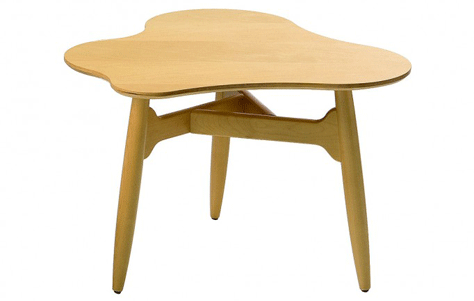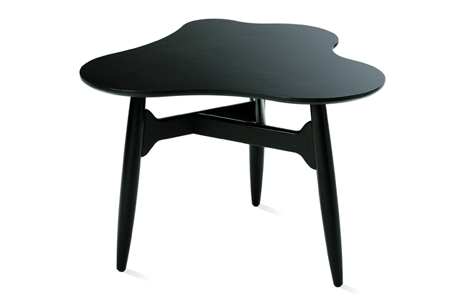Anyone for Tee? Artek’s Tee-Tee Table
1940, a leap year, inaugurated some memorable cultural icons: Tom & Jerry, Pinocchio, McDonald’s. It also marked the invention of Artek’s Tee-Tee Table. A little ink blot on legs, the Tee-Tee Table has itself become a symbol. Designed by Ilmari Tapiovaara, this famous piece has become shorthand for the Finnish design company started by Alvar Aalto and Aino Aalto, Maire Gullichsen, and Nils-Gustav Hahl—a company that sought “to sell furniture and to promote a modern culture of habitation.”
Tee-Tee Table. Designed by Ilmari Tapiovaara for Artek.
Classic Occasional Table Hails from Finland
This line of thinking drives Artek to this day. At the Milan 2011 furniture fair, the company considered “the importance of design in the context of the present age, society and human ethos”—a culture that fails to acknowledge that “the paradox between need and desire lurks in the wings.” It could be said that Artek is redefining the past as it defines the future, which is one reason they presented classic furniture alongside new lighting.


Tee-Tee also showed up at Artek’s booth at ICFF, casting its beautifully irregular shadow. Constructed of birch or oak veneered plywood (top) and solid birch or oak (frame), the Tee-Tee Table serves as an occasional table in the best sense of the term—it is decorative and useful as the occasion requires. Imagine using it as a place to splay out a large tome, or as a surface for serving tea and cucumber sandwiches.
About the Manufacturer: Artek began in 1935 as a furnishings company that believed in a modern style. Nils-Gustav Hahl, one of its founders, called Artek “a sales and propaganda center for the new housing ideology.” Makers of classic mid-century pieces such as Alvar Aalto’s nesting tables and Ilmari Tapiovaara’s Mademoiselle lounge chair, Artek continues to produce these designs, as well as new lighting. They believe that “functionality and timeless aesthetics” are the brand’s essential elements.
Via designwire.




Leave a Reply